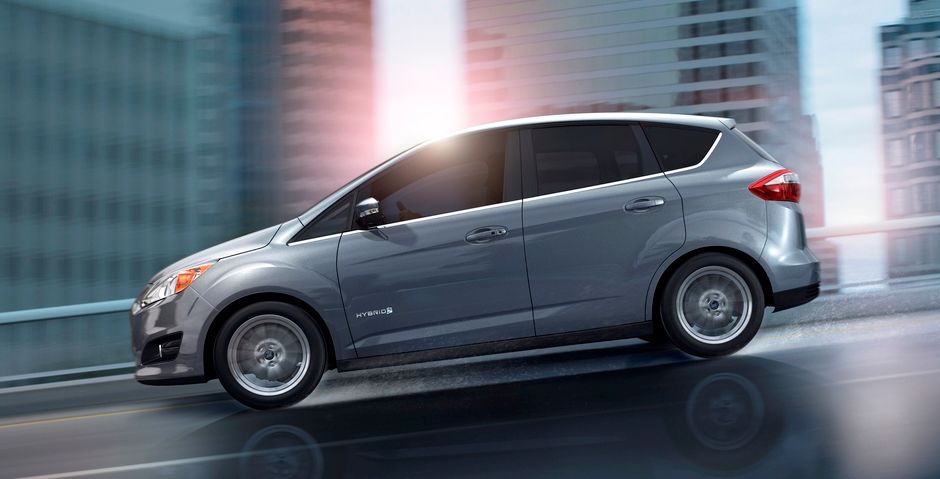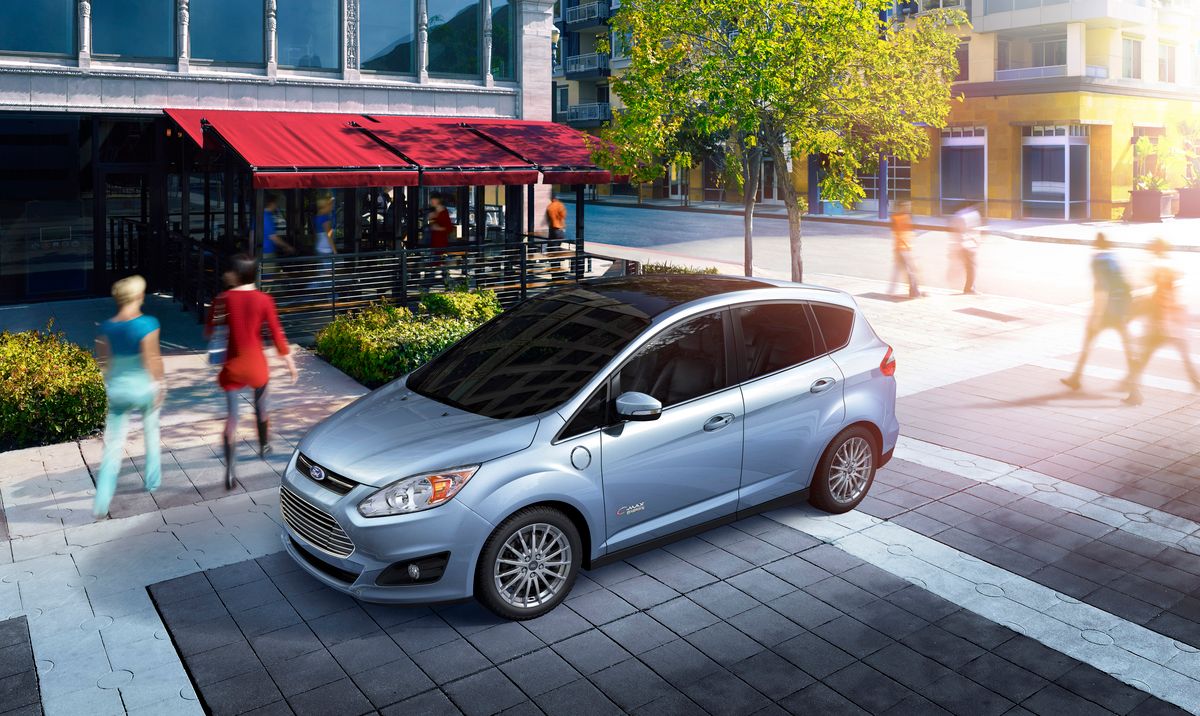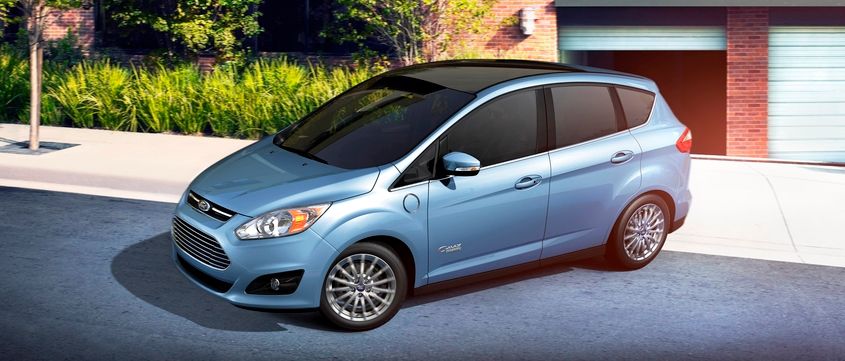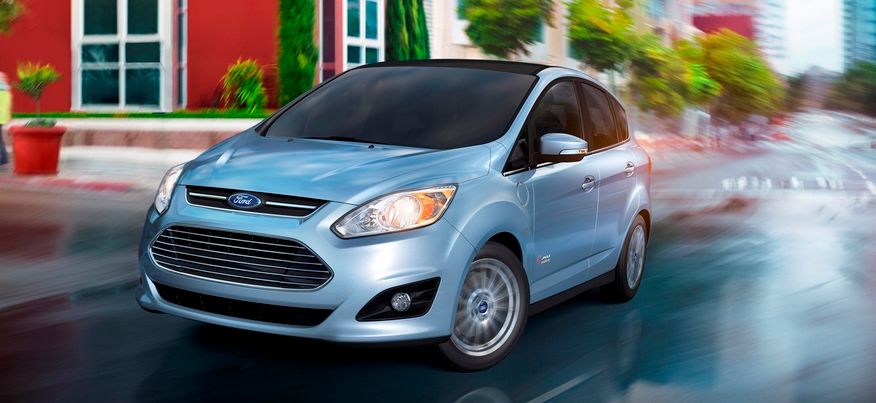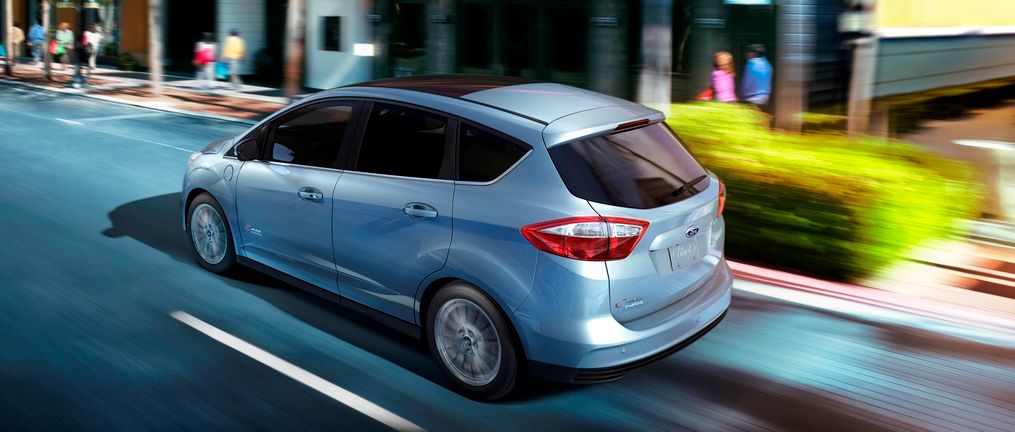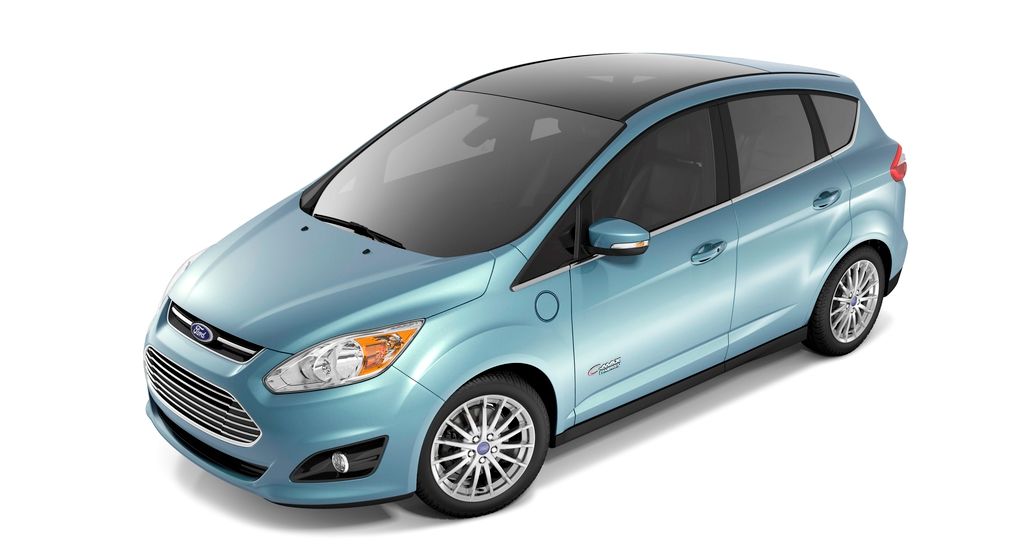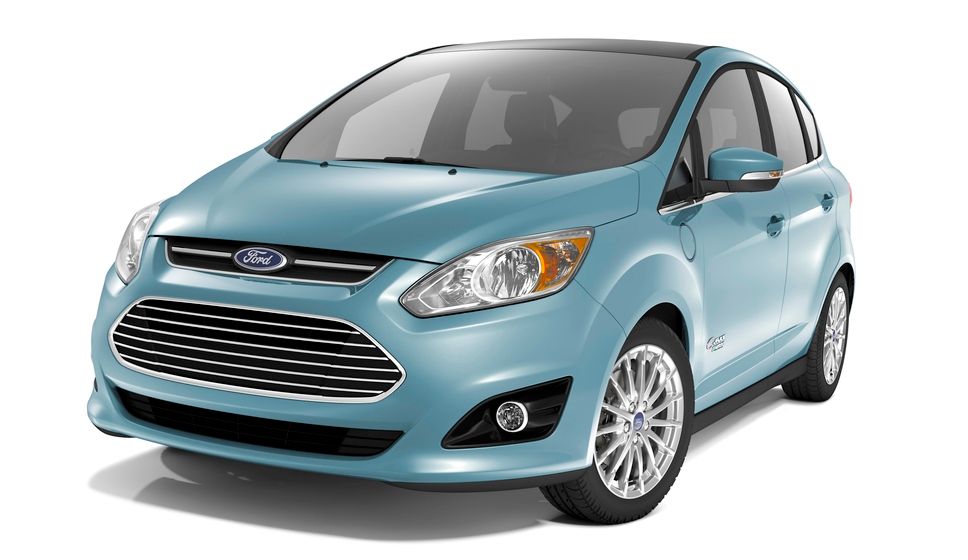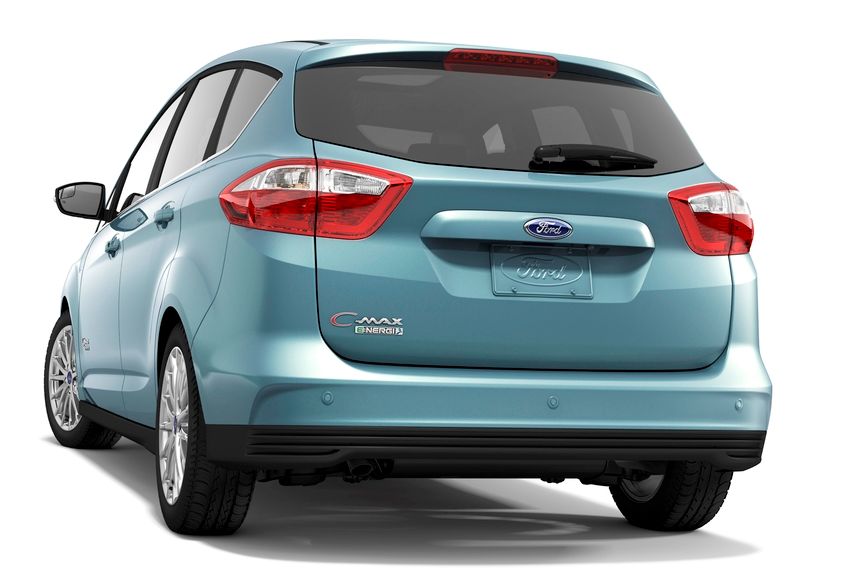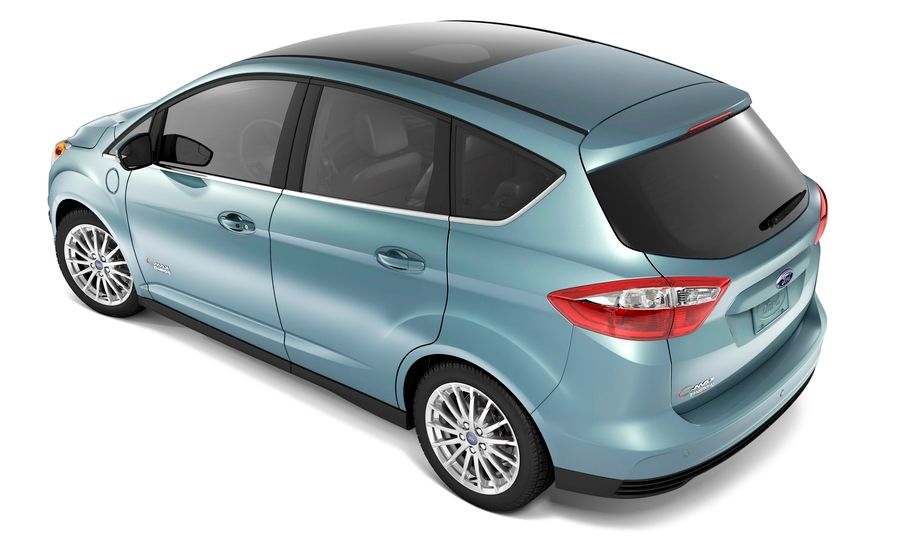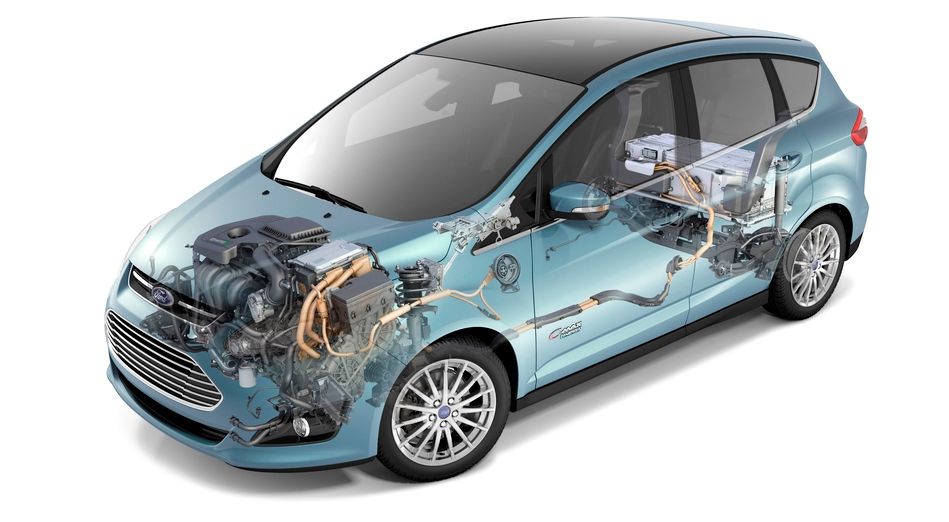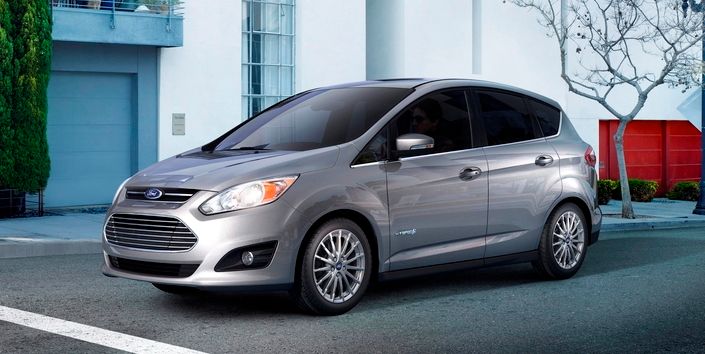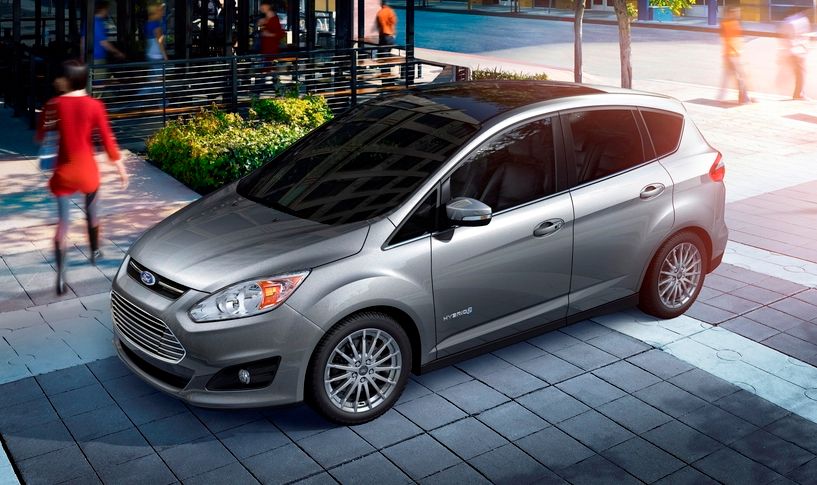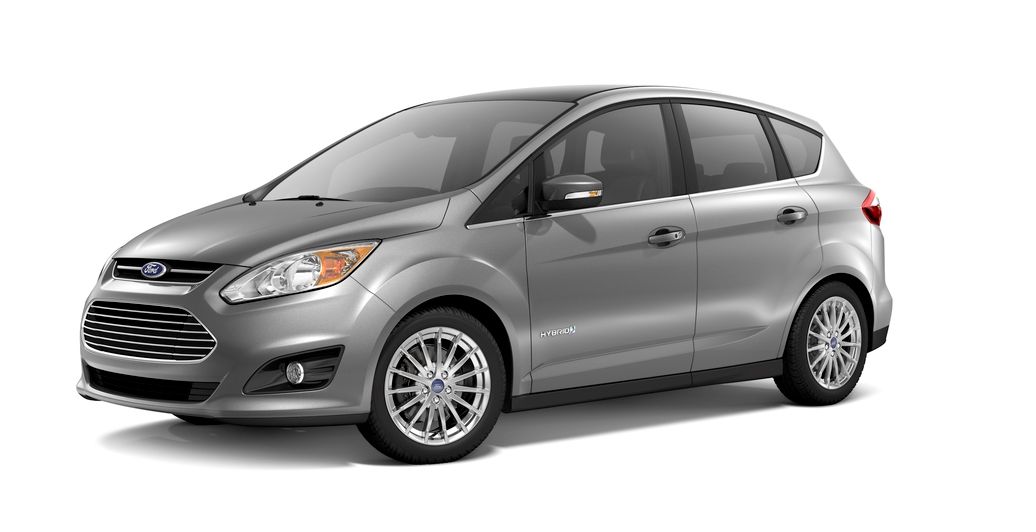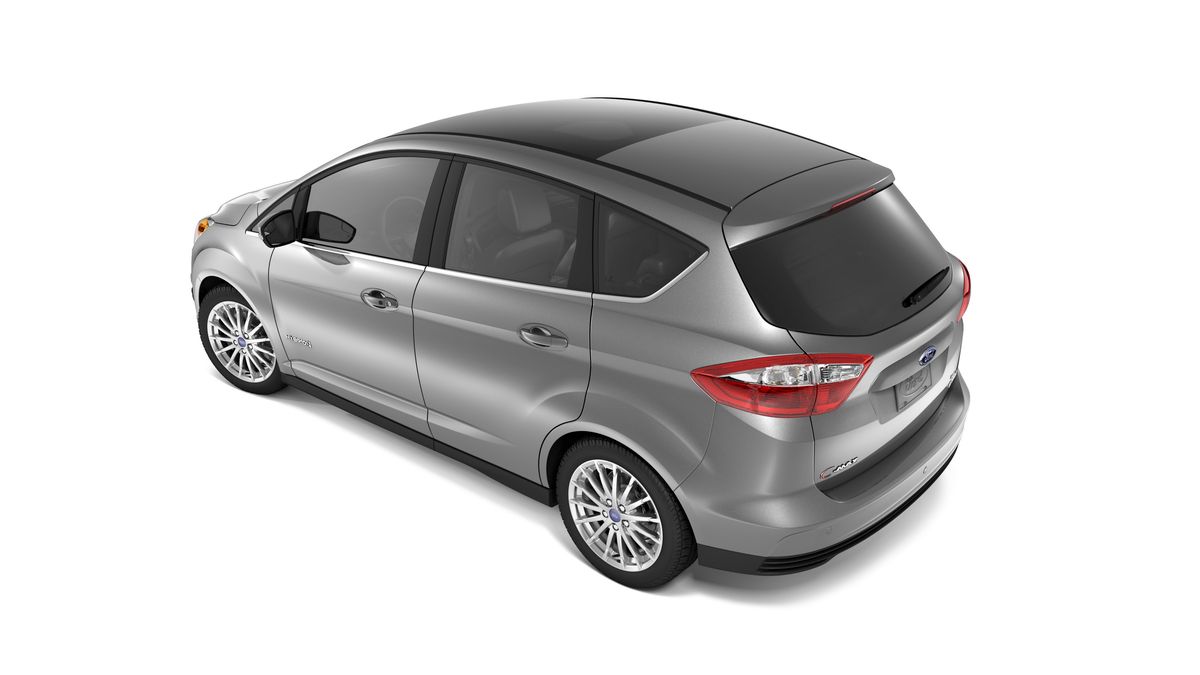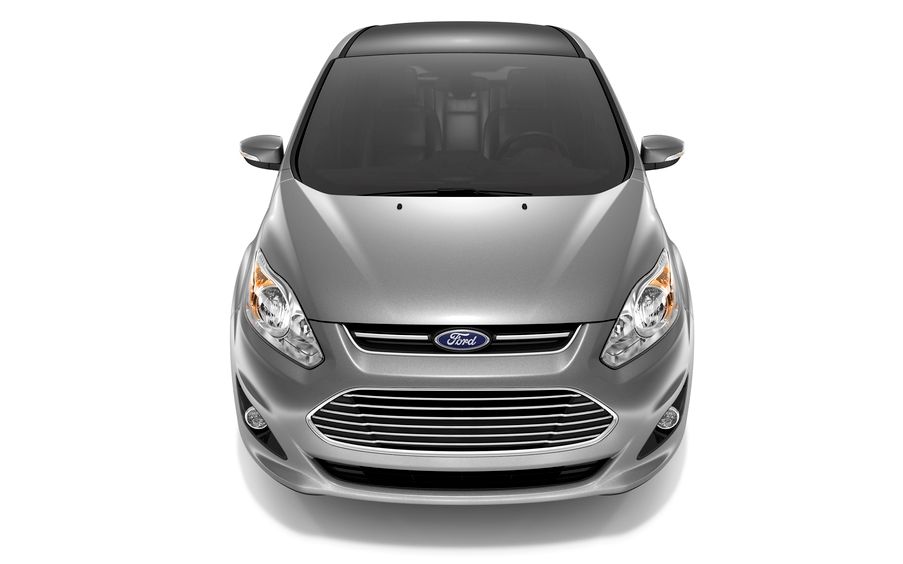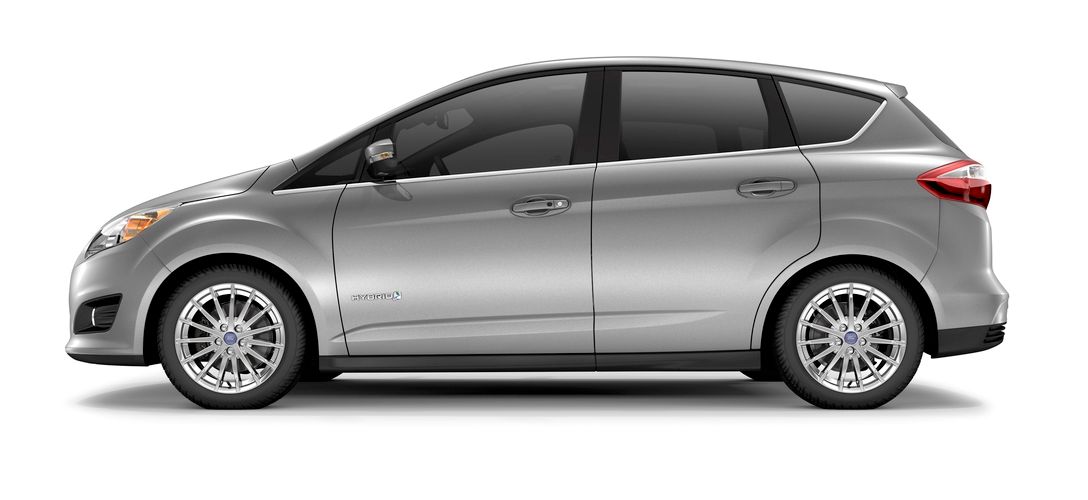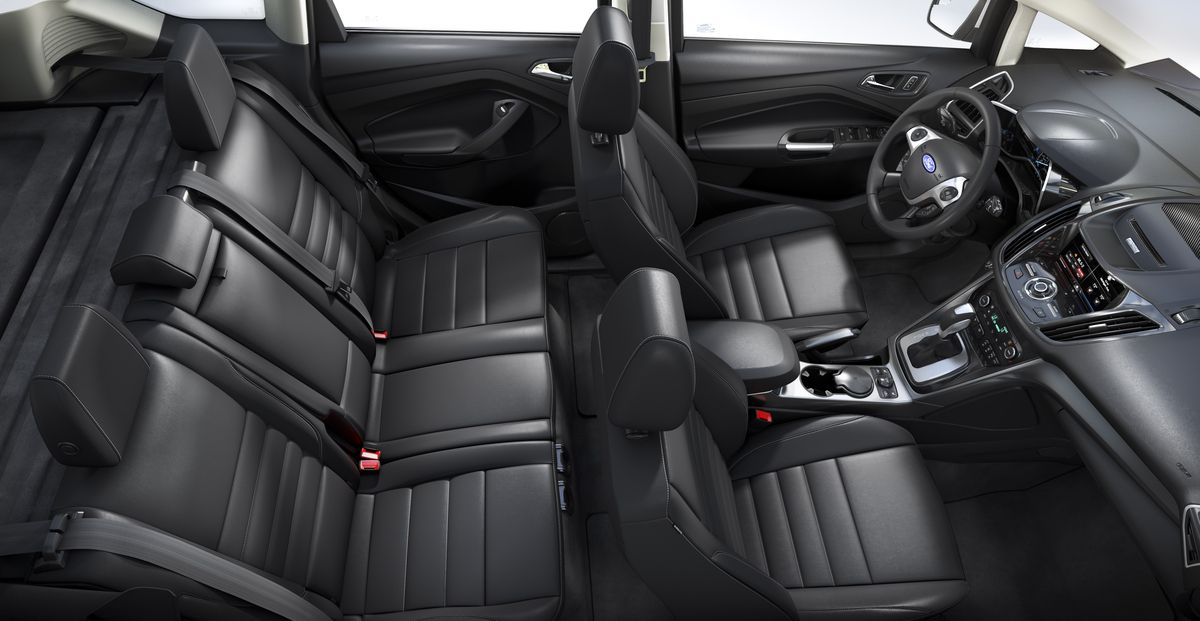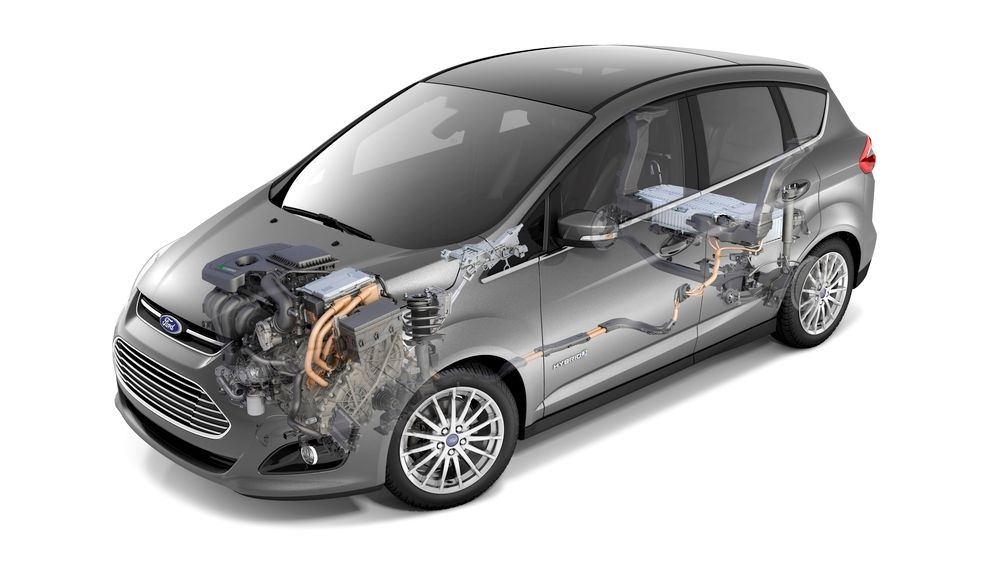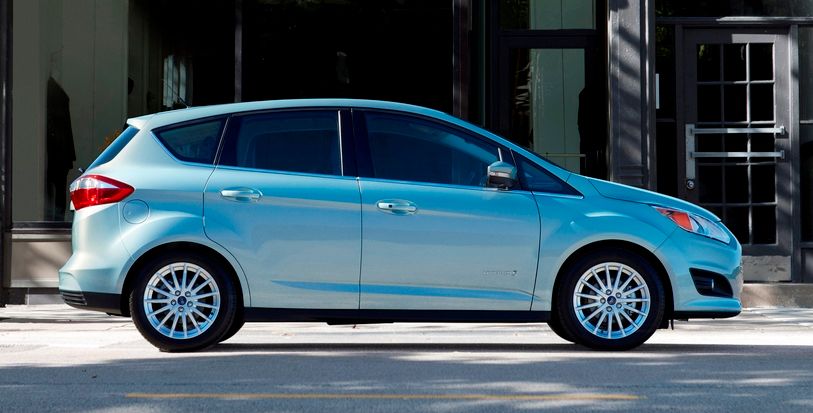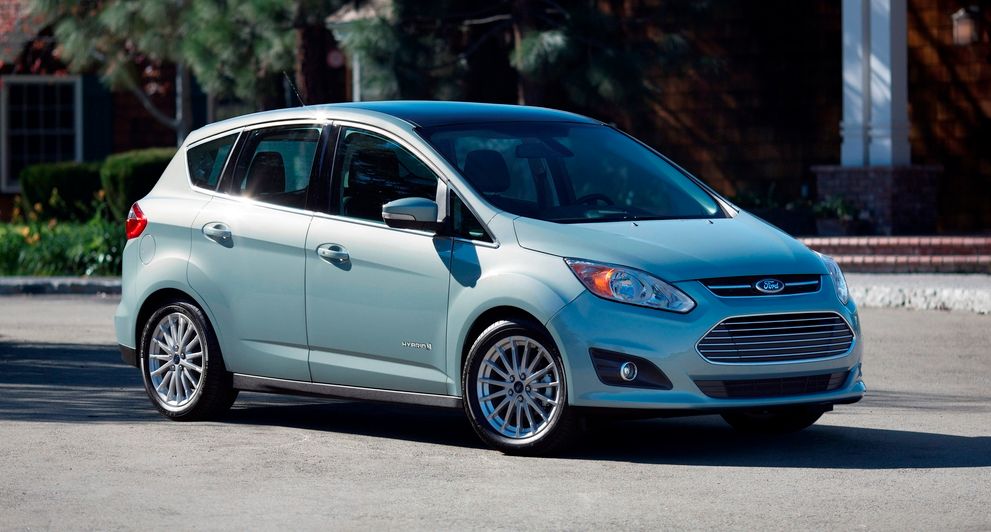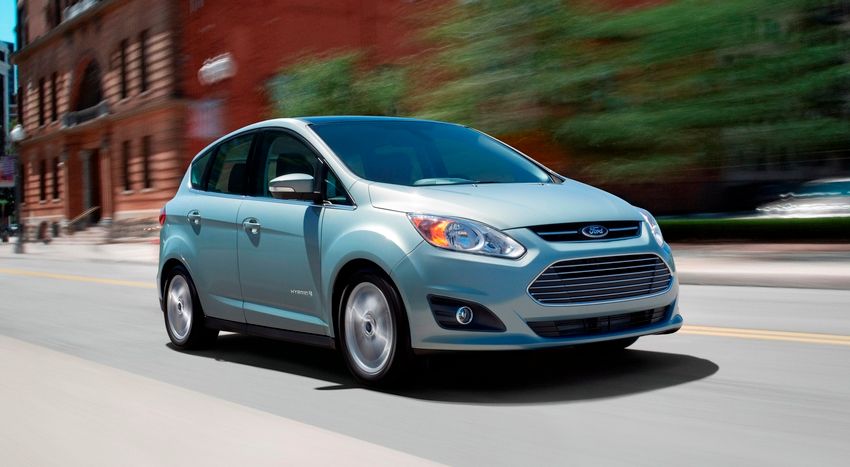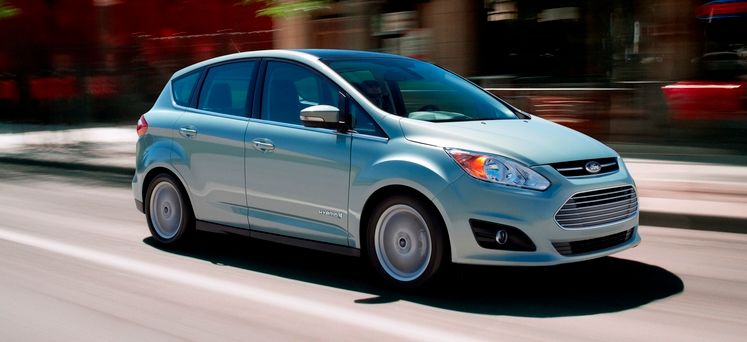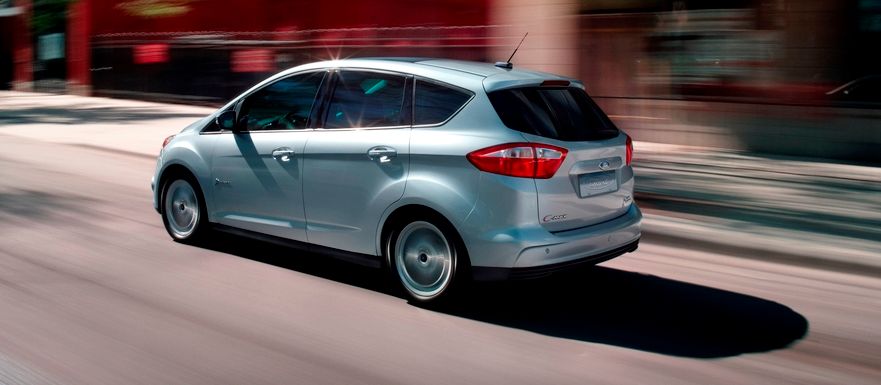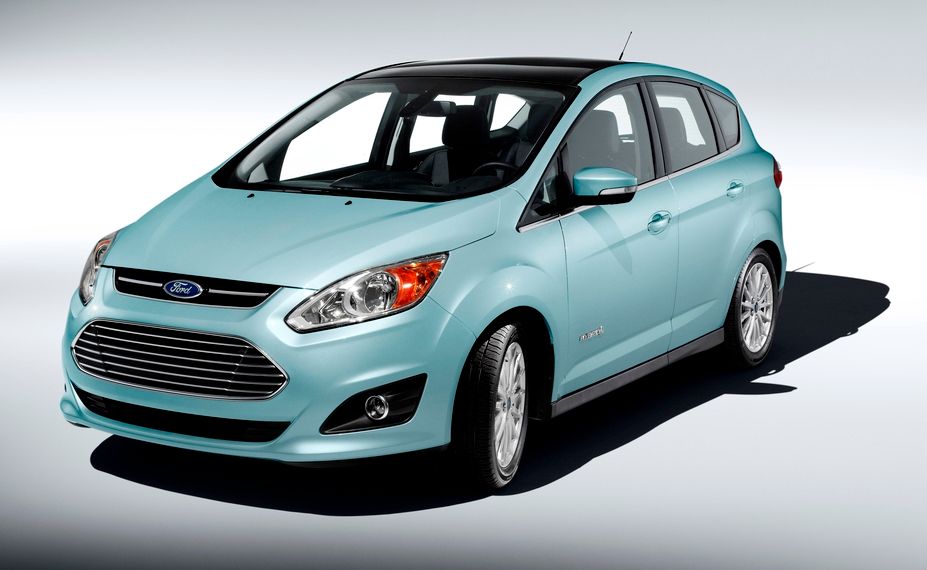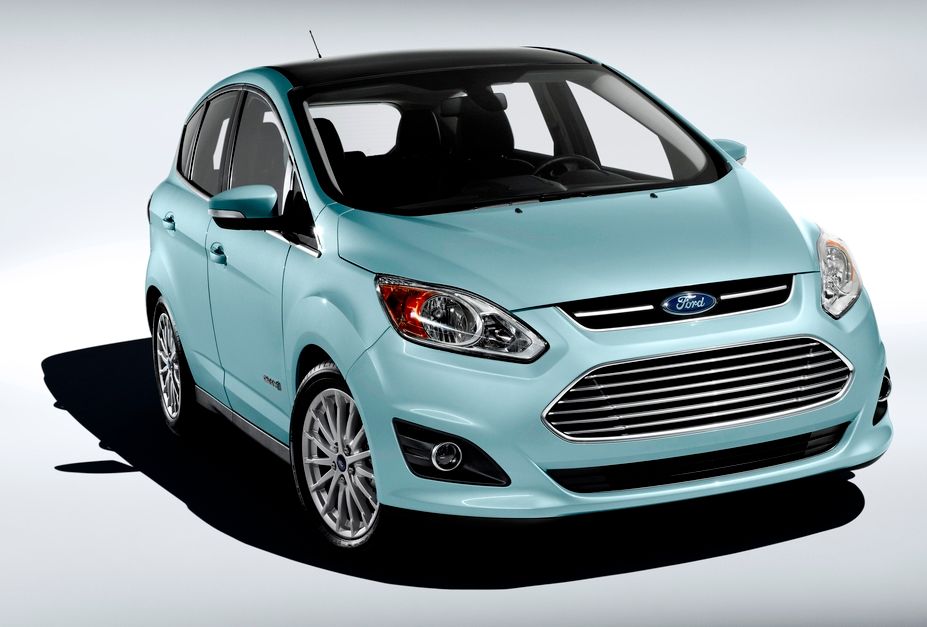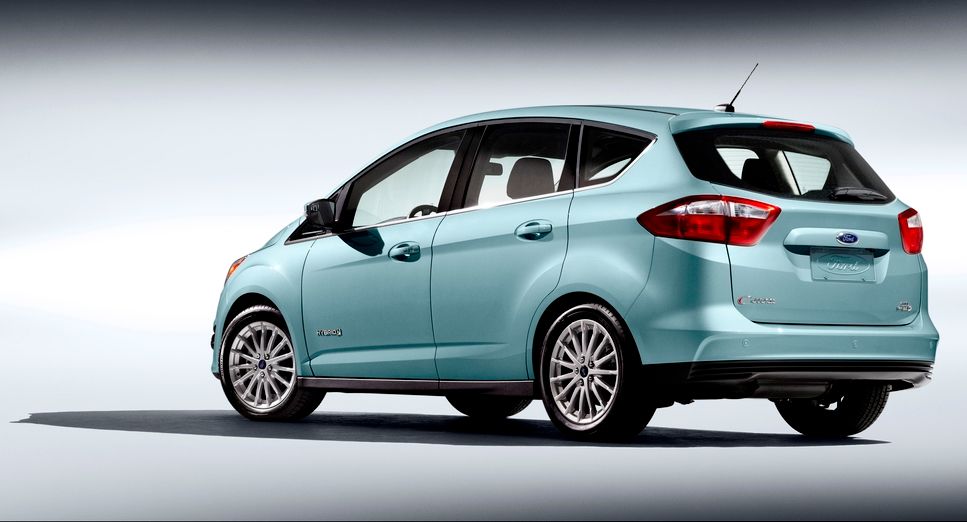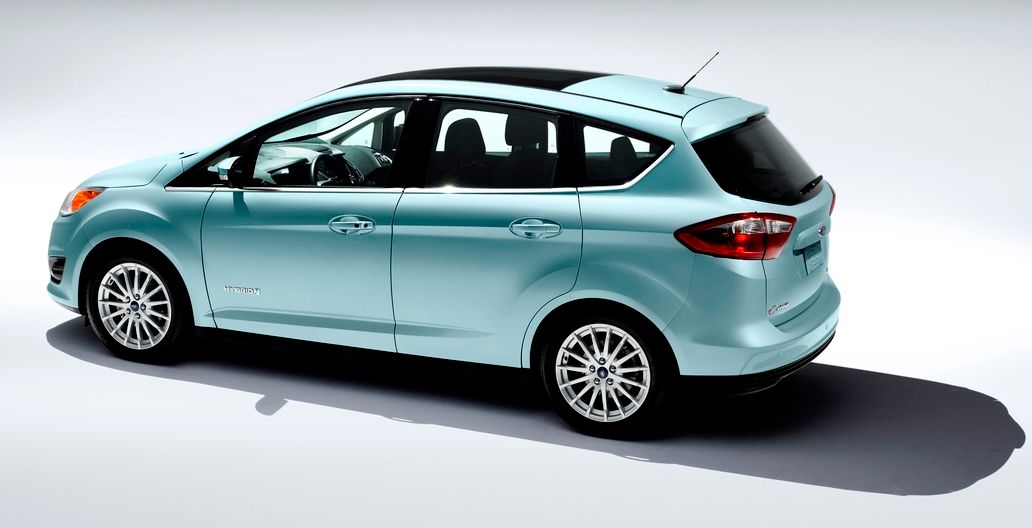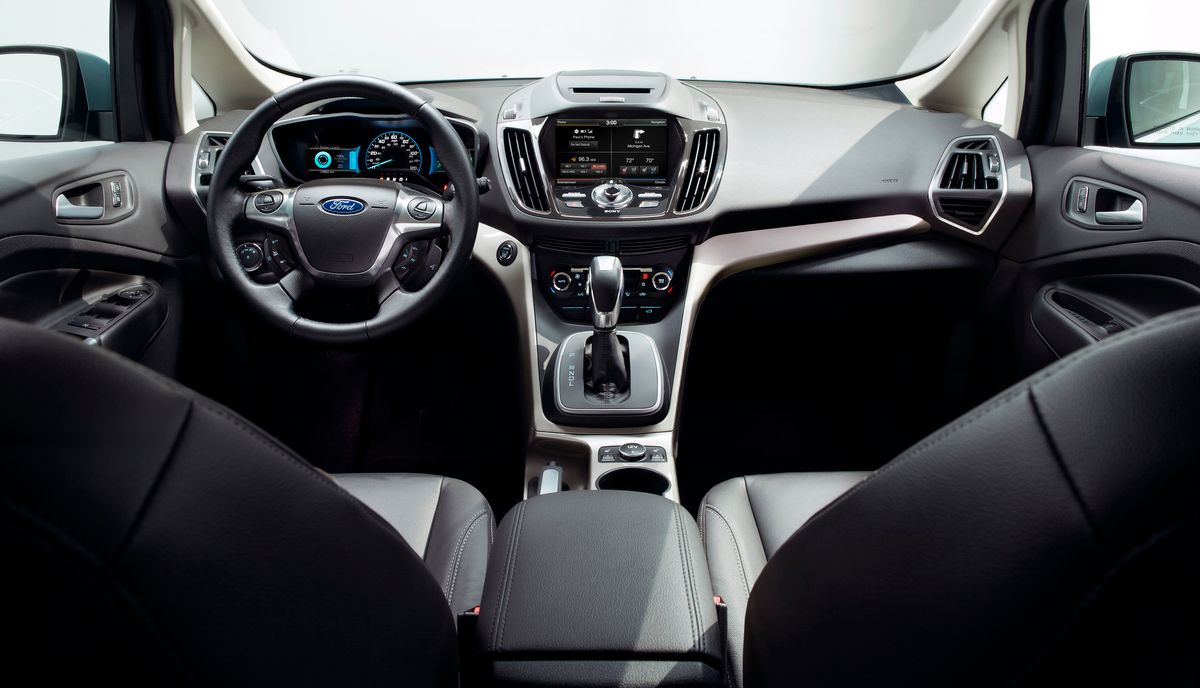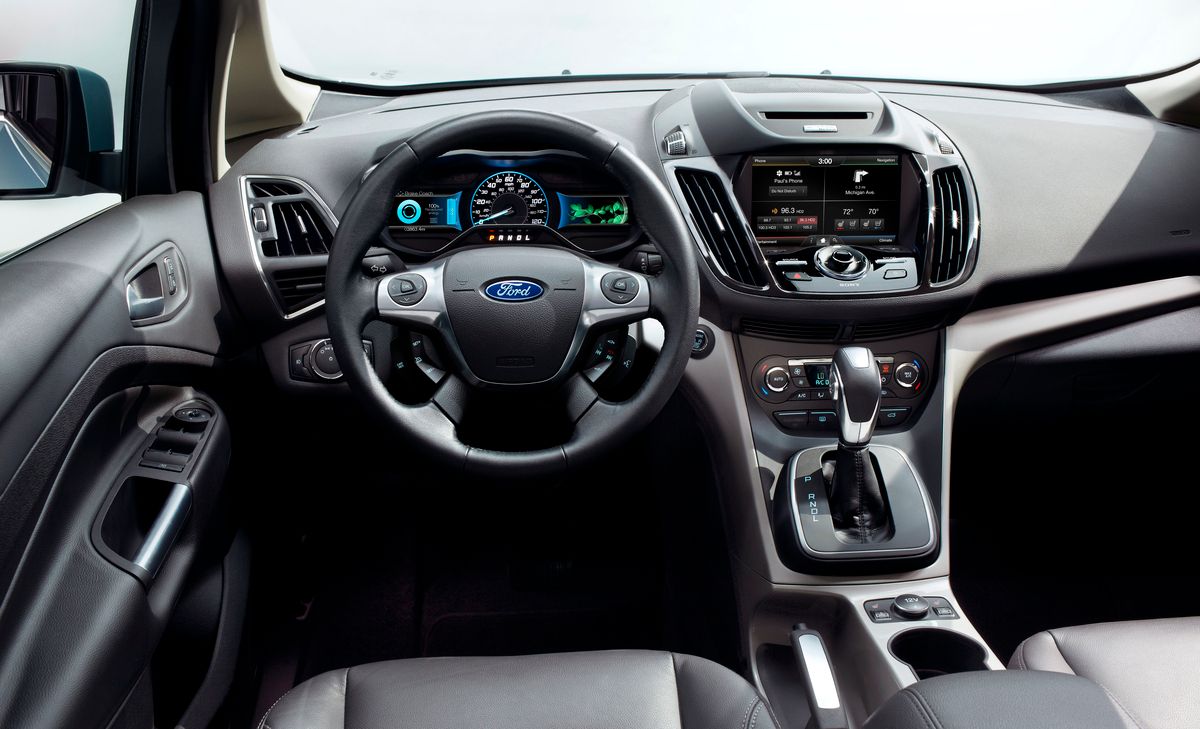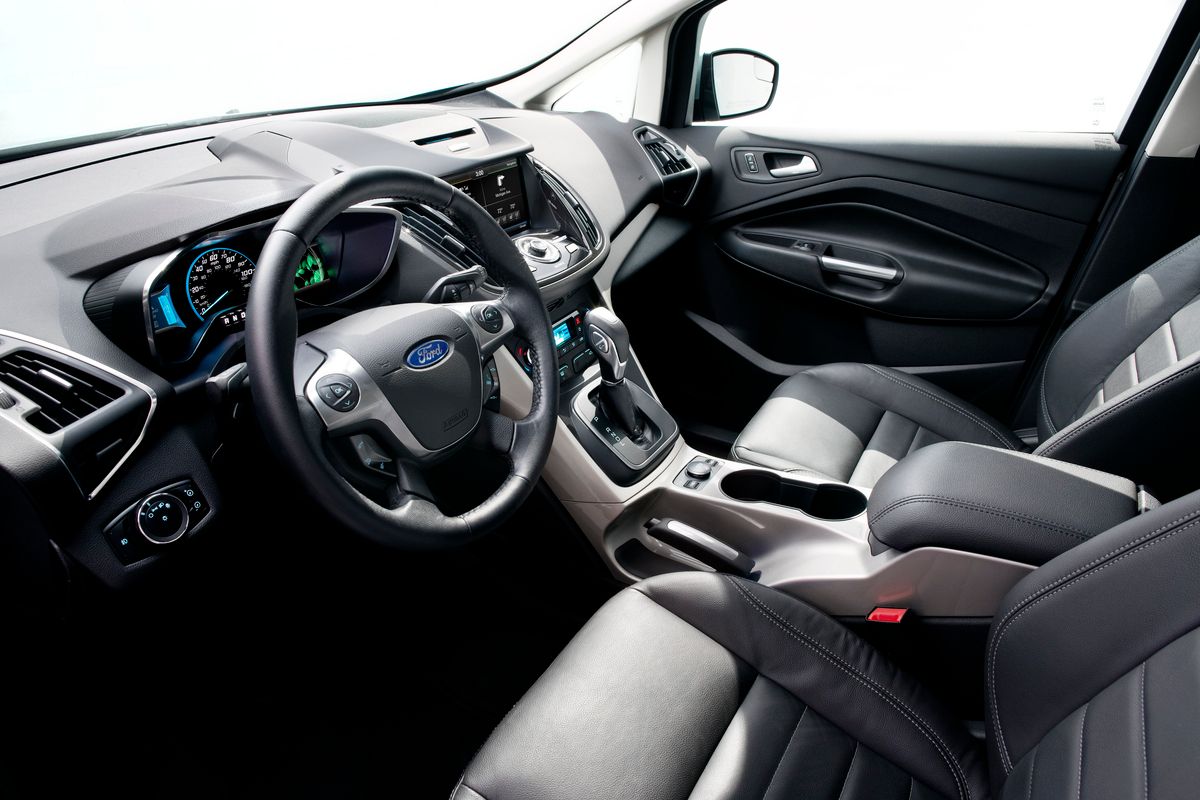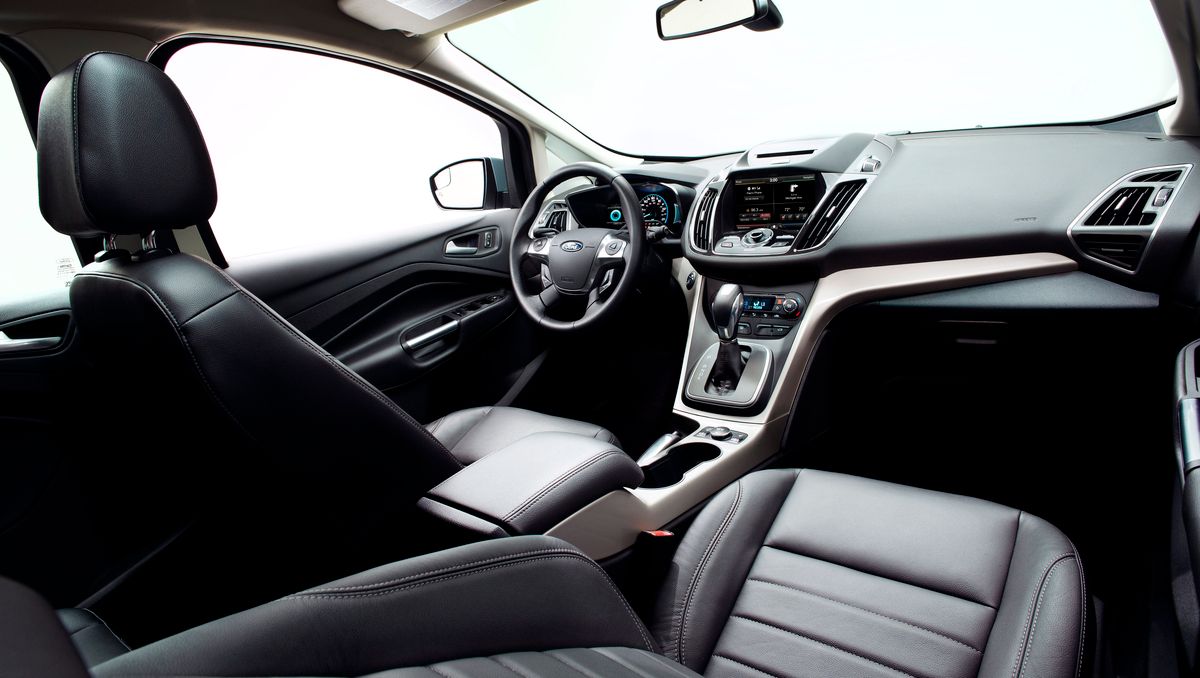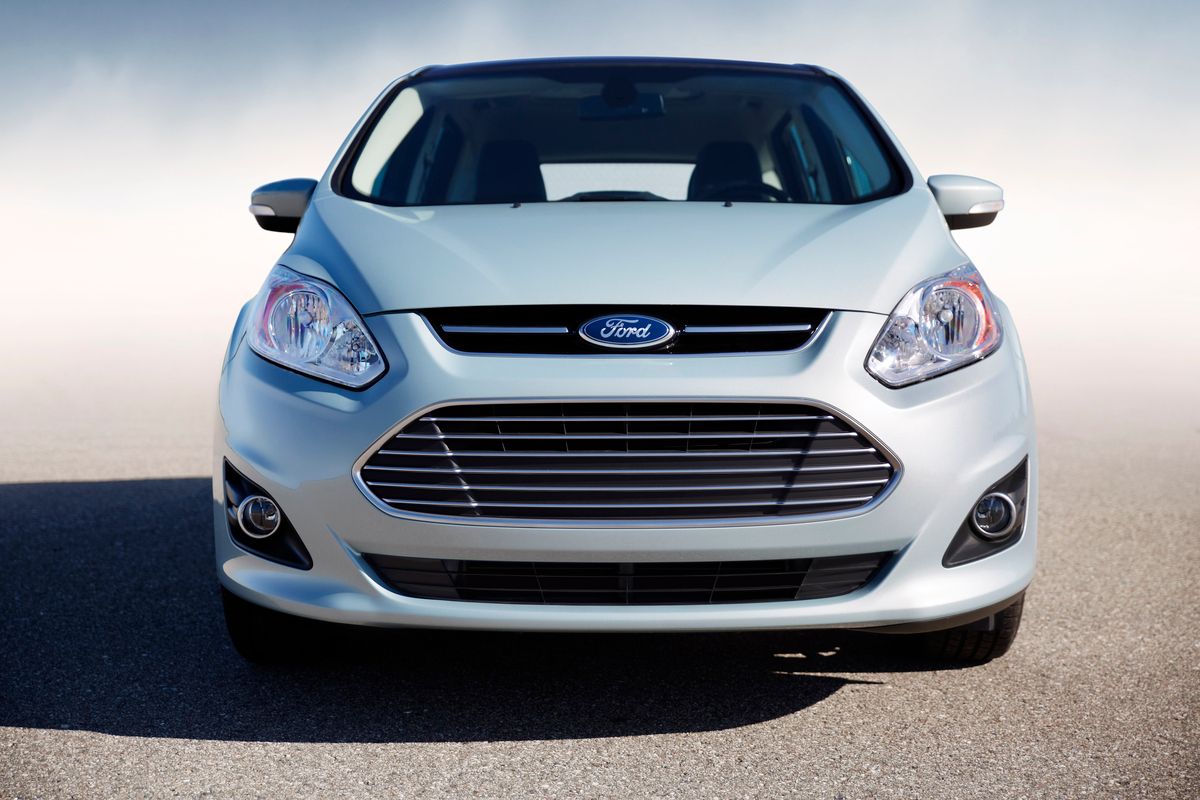The C-Max is Ford’s first Hybrid-only model and comes in two mechanical configurations: Hybrid and ‘Energi’ Plug-in Hybrid. Bringing the heat to Toyota->ke88’s popular Prius->ke231 and the Chevy Volt->ke2721, the C-Max fills a solid gap in the marketplace among consumers who won’t settle for the other cars’ many limitations.
C-Max sales are ramping up steadily and the C-Max is on track to be Ford’s best-selling hybrid model of all time by the end of 2013, based on current year-to-date sales and projections. Granted, Ford has some major ground to make up versus the Prius lineups, which has topped 200,000 sales annually in recent years.
The first-to-market advantage of the Prius continues today with the model family taking 58 percent of the market share for hybrid-electric cars. Despite its utter dominance of the segment so far, there’s no reason that the Prius should set the template for all PHEVs (plug-in hybrid electric vehicles) or simpler full hybrids. As shown by the Tesla Model S, there really is a better way. Driving a hybrid shouldn’t have to mean total misery on the road. Would anyone choose a Prius if it didn't get amazing mileage? No way.
Living somewhere between the Prius and Prius V models, the C-Max offers some real advantages versus its archrivals from Toyota->ke88.
Ford’s bringing its fun-to-drive C-Max to crash the dull Prius party. With more space and more family-friendly packaging than the Focus, but all of its enthusiasm for corners, the C-Max pair will continue to gain ground in the sales battle among eco-keen drivers.
Click past the jump for the full C-Max Hybrid and C-Max Energi review, detailed specs and jumbo image gallery.
2013 Ford C-Max
- Make: Array
- Model: 2013 Ford C-Max
- Engine/Motor: inline-4
- Horsepower: 141
- Torque: 129
- Transmission: CVT Automatic
- [do not use] Vehicle Model: Array
Exterior
The styling of the C-Max is quietly inoffensive with sophisticated surface treatments, practical proportions and the latest family cues from both the Focus Electric and Fusion Hybrids.
The front of the C-Max features a prominent chrome grille and smaller top and bottom grilles below. The effect disguises the C-Max’s tall wagon body profile nicely and is paired with simple reflector headlamps and chrome-trimmed fog lights. Overall, it is not quite as striking as the Fusion but looks better than the Focus to some eyes.
In the accompanying photos, the grey and greenish cars are the Hybrid models, while the light blue car is the Energi. It’s easy to get them mixed up: they share all dimensions and styling aside from unique badges and a charging port for the C-Max Energi's wall plug.
All C-Max models have active grille shutters that close off a portion of the C-Max’s nose for additional aerodynamic smoothness when the cooling air isn’t needed.
Exterior Dimensions:
|
Wheelbase |
104.3 in. |
|
Overall length |
173.6 in. |
|
Overall width |
75.6 in. |
|
Overall height |
63.9 in. |
|
Track |
60.5 inches (front) , 60.4 inches (rear) |
|
Curb weight |
3640 pounds (Hybrid), 3899 pounds (Energi) |
Interior
The interior of the C-Max is practical with lots of space for small families and is also wrapped on a sleek modern design with some interesting features buried in the long standard features lists. Class-exclusives include optional SYNC with MyFord Touch, rain-sensing wipers, and a foot-activated automatic tailgate.
Sitting higher than the Focus, the C-Max has very comfortable and supportive seats and provides keyless entry and ignition as standard.
Other highlights include the Ford SmartGauge cluster that consists of the central speedometer flanked by LCD screens on both sides to display the eco driving and braking coaches that help drivers adjust their driving style to maximize efficiency and regenerative braking. Ford claims the C-Max is able to draw back up to 95 percent of the power typically lost through heat when braking. The exhaust system also is layered in capacitive surfaces to convert engine heat into battery power.
As Ford’s first dedicated Hybrid, there are very few interior compromises for the Energi model’s much larger battery: only a few cubic-feet of trunk space go missing. Also on the Energi is a centrally-mounted EV button that allows drivers to operate in silent electric mode for up to 21 miles – far longer than the Prius Plug-In’s 6 miles – and at a max speed of 85 mph. The hybrid model can only reach 62 mph in electric mode.
The Energi is equipped with MyFord mobile, an app-based platform for scheduling and monitoring the vehicle’s charge status from afar. EV+ is a feature that seems like a particularly smart idea that shows Ford is thinking about the future.
In many global cities such as London, lawmakers are drafting rules to allow only electric cars in dense city centers (or allowing them to come into the centers without paying the $20 daily congestion charge). We’re not quite there yet with American cities but it’s on the horizon. EV+ is a setting that can automatically switch to electric power at a selectable GPS way-point, such as the city limits, where a driver will always want to switch to EV mode when commuting, for example. This automates the process and is easy to use.
The interior of the C-Max marks it well above the competition, particularly the Prius, whose interior is less like a normal car. The final interior achievement is really thorough sound-proofing that makes the C-Max a far more relaxing and civilized drive than the Prius, which can be unrefined under heavy throttle, crashes over bumps and is generally more boomy inside.
Ford C-Max Hybrid SEL model Standard Interior Features:
- One 12V power outlet(s) in front and rear
- Dual-zone climate control
- Roof antenna
- Anti-theft protection
- Audio system with AM/FM radio, CD player (reads MP3 format), digital media card and satellite radio
- Cargo area light
- Cargo capacity: rear seat down (cu ft): 54.3, all seats in place (cu ft): 24.5 and Manufacturer’s own
- Coming home device
- Compass
- Trip computer: includes average fuel economy, current fuel economy and range for remaining fuel
- Floor console with covered storage, overhead console
- Cruise control
- Front cup holders
- Door entry light
- Electric Power source: lithium ion, lithium ion 18 and battery kWh: 1.4
- Outside air temperature indicator
- Floor covering: carpet in passenger compartment and carpet in load area
- Carpet floor mats
- Intelligent driver and passenger front airbag
- Driver bucket front seat heated with 10-way power height, power lumbar and power tilt, front passenger seat bucket front seat heated
- Height adjustable driver and passenger front seat belts with pre-tensioners
- Front seat center armrest
- Garage door opener
- Headlight control
- Two height-adjustable front seat head restraints, three height-adjustable rear seat head restraints
- Driver knee airbags
- Low tire pressure indicator
- Navigation system with arrows and voice
- Reverse Sensing System rear radar parking distance sensors
- Card key power locks
- Power front and rear windows with one-touch on two windows
- Front and rear reading lights
- Rear seat belt, passenger rear seat belt, 3-point center rear seat belt
- Rear seat center armrest
- Split-folding rear seats:
- Auto-dimming rear view mirror
- Steering wheel mounted remote audio controls
- Remote control trunk/hatch release
- Seating: five passengers
- Leather upholstery
- Service interval indicator
- Front side airbag
- Intelligent Access smart card/smart key includes keyless starter
- Six speakers
- Leather-trimmed, tilt telescoping steering wheel
- Tachometer
- 911 Assist telematics
- Illuminated driver and passenger vanity mirror
- Ventilation system with micro filter
- Voice activating system for radio, phone and navigation system
In terms of size, the C-Max is roomier than Chevrolet Volt in all dimensions from the front and back seats and closely matches with the Prius in most dimensions. The Prius packs 2 cubic-feet more overall passenger volume, plus more hip and shoulder room.
The C-Max Energi’s cargo compartment behind the back seats stomps the Prius Plug-in by more than 6 additional cubic-feet. The seats fold down in the Volt and Prius as well as the C-Max, but there flattest load floor when folded is in the Prius. Like the Prius, the Ford’s optional panoramic moonroof does eat about an inch of headroom, but there is plenty to spare.
Interior Dimensions:
|
Seating Capacity |
5 |
|
Headroom (Front/Rear) |
41/39.4 in. |
|
Legroom (Front/Rear) |
43.1/36.5 in. |
|
Shoulder Room (Front/Rear) |
55.9/55.2 in. |
|
Hip Room (Front/Rear) |
54.3/51.9 in. |
|
EPA Passenger Volume |
99.7 cu. ft. |
|
EPA Cargo Volume (Hybrid/Energi) |
24.5 cu. ft./19.2 cu. Ft. |
|
EPA Class |
Midsize |
Drivetrain, Suspension and Brakes
The primary difference between the standard Hybrid model and the pricier Energi hybrid is that the Energi can double the estimated miles-per-gallon by charging it at home. Both models use the latest high-tech, Lithium-Ion batteries and the size of the pack grows from 1.4 kWh in the Hybrid to 7.6 kWh in the Energi. Accordingly, the Energi takes longer to charge than the Plug-in Prius, but that model is barely a real PHEV because the EV-only range is just a few miles and the max EV speed is just 25 mph.
Overall, the Energi’s larger battery and larger (by half a gallon) gas tank versus the Hybrid extends the possible max range from 570 miles in the Hybrid up to 620 miles in the Energi model. Both C-Max models offer smooth and easy transitions between hybrid and electric power.
|
Ford C-Max model |
C-Max Hybrid |
C-Max Energi |
|
Engine Size and Type |
2.0-liter DOHC inline four-cylinder, |
|
|
Atkinson cycle |
2.0-liter DOHC inline four-cylinder, |
|
|
Atkinson cycle |
||
|
Peak power – gasoline |
141 horsepower |
141 horsepower |
|
Peak torque – gasoline |
129 pound-feet |
129 pound-feet |
|
Peak Torque – electric |
177 pound-feet |
177 pound-feet |
|
Transmission |
CVT Automatic |
CVT Automatic |
|
0-60-mph |
8.1 seconds |
8.5 seconds |
|
Top Speed |
115 mph |
102 mph |
|
Top Speed - Electric Mode |
62 mph |
85 mph |
|
EPA Miles Per Gallon Equivalent (MPGe) |
47 city/47 highway/47 combined |
108 city/92 highway/100 combined |
|
Charging Time (Energi model only) - 120V/240V |
~7 hrs/~2.5 hrs |
Safety
Both C-Max models just finished NHTSA testing and are overall four-star cars, up to five stars in side crash test safety.
Standard Safety Features:
- AdvanceTrac electronic stability control with Roll Stability Control
- Dual front airbags, front seat-mounted side airbags, dual front knee airbags and front and rear side curtain airbags
- Adaptive restraints
- Tire Pressure Monitoring System
- SOS Post-Crash Alert System™
- LATCH (Lower Anchors and Tether Anchors for Children)
Reliability and Recalls
The 2013 Ford C-Max was recalled in March 2013 to check the rear child locks on the doors, which may be defective and require replacement. Ford has had some real recall troubles with its car line in 2013, but the C-Max is doing better than the 2013 Escape, for which five recalls are already on the books.
The reliability of both C-Max models is above average, with the engine and transmission especially reliable. The new battery technology in the C-Max is less proven over the total lifetime of the car but is expected to meet or exceed the long-term charge capability of the older Escape Hybrid.
Pre-2010 Ford hybrid’s used Toyota technology under a licensing deal, but the latest generation of Ford Hybrids use a proprietary design that is less proven.
Pricing and Residuals
The C-Max lineup has three models available and a number of optional extras. The pricing for the option packs vary slightly depending on which base mode selected. The residual value predictions from Kelley Blue Book are not complete for the C-Max models; however, the related Fusion Hybrid is the firm’s top-ranked hybrid sedan for resale or trade-in value after 60 months.
Base pricing:
|
Ford C-Max Hybrid SE |
$25,200 |
|
Ford C-Max Hybrid SEL |
$28,365 |
|
Ford C-Max Energi |
$32,950 |
Major Options and Prices for the mid-level Ford C-Max SEL are listed below. The major options cost less in the better-equipped Energi model, and cost more in the cheaper Hybrid SE model.
- Equipment Group 301A - $1,440: Navigation system with 3D and voice; Nine Sony speakers; Sony audio system digital radio
- Equipment Group 302A - $2,215: Power liftgate; Rear cam&radar parking distance sensors; Hands-free liftgate; Includes: Equipment Group 301A
- Equipment Group 303A - $3,080: Front radar parking distance sensors; Parking assistance: Fully automatic for front parking and rear parking; Includes: Equipment Group 302A
- Interior Protection Package - $170: Plastic/rubber floor mats; Floor covering: plastic/rubber in load area
- Exterior Protection Package - $245: Front and rear mud flaps; Rear bumper protection
- Cargo Management Package - $115: Load restraint: net; Cargo organizer fold-able soft
- Engine Block Heater (Fleet) - $35: Block heater
- Panoramic Vista Roof - $1,195: Electric glass sunroof; Glass roof
- Remote Start System - $395: Remote engine starter
- Full Vehicle Car Cover (Dealer) - $375
- Daytime Running Lamps (Fleet) - $45
- Ruby Red Metallic, or White Platinum Metallic, or Blue Candy Metallic - $395: Multi-coat metallic paint
Competition
The C-Max competes with the Prius, the Prius Plug-in, the Prius V (wagon), and finally the Chevrolet Volt Plug-in Hybrid.
The Prius still dominates this category by a huge margin, but the less-successful Plug-in model really falls flat versus the Ford on interior design, EV range, cargo space and price. The Prius V addresses some of the small-trunk concerns with the Prius PHEV but does so with a tall wagon body so dowdy that it makes the original Prius look sexy. The Prius is a lot of things, and “sexy” isn’t one of them.
A pioneer in the plug-in hybrid arena, the Volt is now three years old and is struggling to maintain any sales momentum. The uncomfortable styling (especially the odd blacked-out window line in profile) plus a more-cramped interior and higher price leave it in bad shape versus the C-Max Energi.
Conclusion
Ford’s vision for the C-Max as a dedicated hybrid model was to offer real-car driving dynamics, additional performance, and the segment’s best MPGe ratings for the Energi model. The car delivers on these goals and seems like a compelling choice versus the vanilla Prius. The large rear doors, auto tailgate and roomy back seats make the C-Max a great option for small urban families.
As with all plug-in hybrids, the Energi model is best suited for people with an attached garage. For everyone else, the burden of plugging the car in will quickly get old and the mileage will plummet. Based on how much EV time is spent driving, the Energi will need to be recharged at least once a week to maintain the quoted performance figures. Of course, if convenient, charging every night means virtually free running costs at current home-electricity rates.
The C-Max shows great progress for Ford’s effort to crack the hybrid market, the technology underneath, as well as helpful interfaces and tools for consumers to maximize the C-Max’s efficiency benefits. Part of a five-strong model lineup, the C-Max is actually a desirable car even without the stellar MPG numbers that are its party piece.
|
Category |
Rating |
Details |
|
Driving |
A |
Fun Handling and Accurate Steering Enhance Driver Satisfaction |
|
Performance |
B+ |
Very Good Passing Power And Acceleration By Hybrid Standards |
|
Look |
B- |
Not Winning Any Beauty Contests But Perfect Tall-Wagon For Small Families |
|
Value |
A |
Energi Model Cheaper Than Prius Plug-in Advanced |
|
Overall |
B+ |
Easy-to-use Eco Tech Meets Big-Car Feel; Not A Prius |

